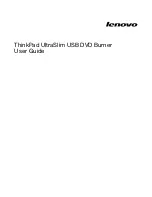
Appendix H RS422 Communications (Ports P1 & P2)
590 DRV Digital DC Drive Product Manual
App. H - 8
H
Data Format
The 590 Digital drive uses an ASCII free-format mode of operation for data transfer to make it easy to implement with
languages such as BASIC, PASCAL, FORTRAN, and assembler languages. As a result, users can create simple
supervisory systems to run on an IBM PC.
Numerical Data (Format 21 - Free Format Numeric)
Numerical data is transferred by transmitting a string of characters. The length of the string is determined by the value
itself. No leading or trailing zeros are needed to normalize the string length. That is:
1
can be sent as
1.00, 1.0, 1., or 1
-2.2
can be sent as
-2.20 or -2.2
19.99
is sent as
19.99
Status Information (Format 23 - Hexadecimal)
Status information is transmitted by encoding the data into a hexadecimal format. The number of characters in the
encoded data determines the length of the string. The hexadecimal data is preceded by a ‘>’ sign to differentiate it
from numerical data.
Note: Hexadecimal refers to the common practice of computing in the base of 16 rather than the base of
10. The sixteen numbers used are 0 to 9 and A to F. As a result, an 8 bit byte is represented by two
characters in the range 00 to FF, while a 16 bit word is represented by four characters in the range 0000
to FFFF.
Data Transfer Sequence
The data transfer sequence in the ASCII mode offers the following facilities:
i. Asking questions (known as polling)
a. Single parameter poll
b. Continuous polling of one parameter
c. Sequential polling down the parameter list (fast polling)
ii. Setting parameters (known as selection)
a. Single parameter update
b. Continuous updating of one or more individual parameters
Serial Data Transmission
When an ASCII character is sent by serial data transmission, the bit pattern is transmitted in a fixed order. Start and
stop bits indicate the start and finish of that pattern.
The seven bit ASCII code is usually extended by one bit called the parity bit. The parity bit shows whether the total
number of bits in each character code is odd or even. Eurotherm protocol requires that the parity bit indicates even
parity; that is, the parity bit is set if the number of bits in an ASCII character is odd. The serial data pattern also
allows the use of multiple stop bits. Eurotherm protocol; however, dictates that there is only one stop bit if the data
rate is greater than 110 baud. The 590 Digital drive and its instruments use 300 to 9600 baud.
Summary of Contents for 590 DRV Digital
Page 2: ......
Page 16: ...1 4 Chapter 1 Introduction 1 590 DRV Digital DC Drive Product Manual ...
Page 22: ...2 6 2 Chapter 2 Identification 590 DRV Digital DC Drive Product Manual ...
Page 45: ...Figure 3 20 Wiring Circuit Diagram for 590 DRV Digital Drive ...
Page 77: ...5 22 5 590 DRV Digital DC Drive Product Manual Chapter 5 Troubleshooting ...
Page 103: ...App A 18 A Appendix A Technical Description 590 DRV Digital DC Drive Product Manual ...
Page 107: ...B Appendix B Using the Man Machine Interface App B 4 590 DRV Digital DC Drive Product Manual ...
Page 149: ...Appendix C Setup Parameters 590 DRV Digital DC Drive Product Manual App C 42 C ...
Page 173: ...Appendix D I O Configuration System Menu App D 24 D 590 DRV Digital DC Drive Product Manual ...
Page 174: ...Figure D 20 590 DRV Digital DC Drive Software Block Diagram t t t t ...
Page 202: ...App F 18 Appendix F Spare Parts List 590 DRV Digital DC Drive Product Manual F ...
Page 208: ...Appendix G RS232 System Port P3 590 DRV Digital DC Drive Product Manual App G 6 G ...
Page 250: ...Appendix J Parameter List by Menu App J 8 J 590 DRV Digital DC Drive Product Manual ...
Page 258: ...Appendix K Parameter List by Parameter Name 590 DRV Digtial DC Drive Product Manual App K 8 K ...
















































